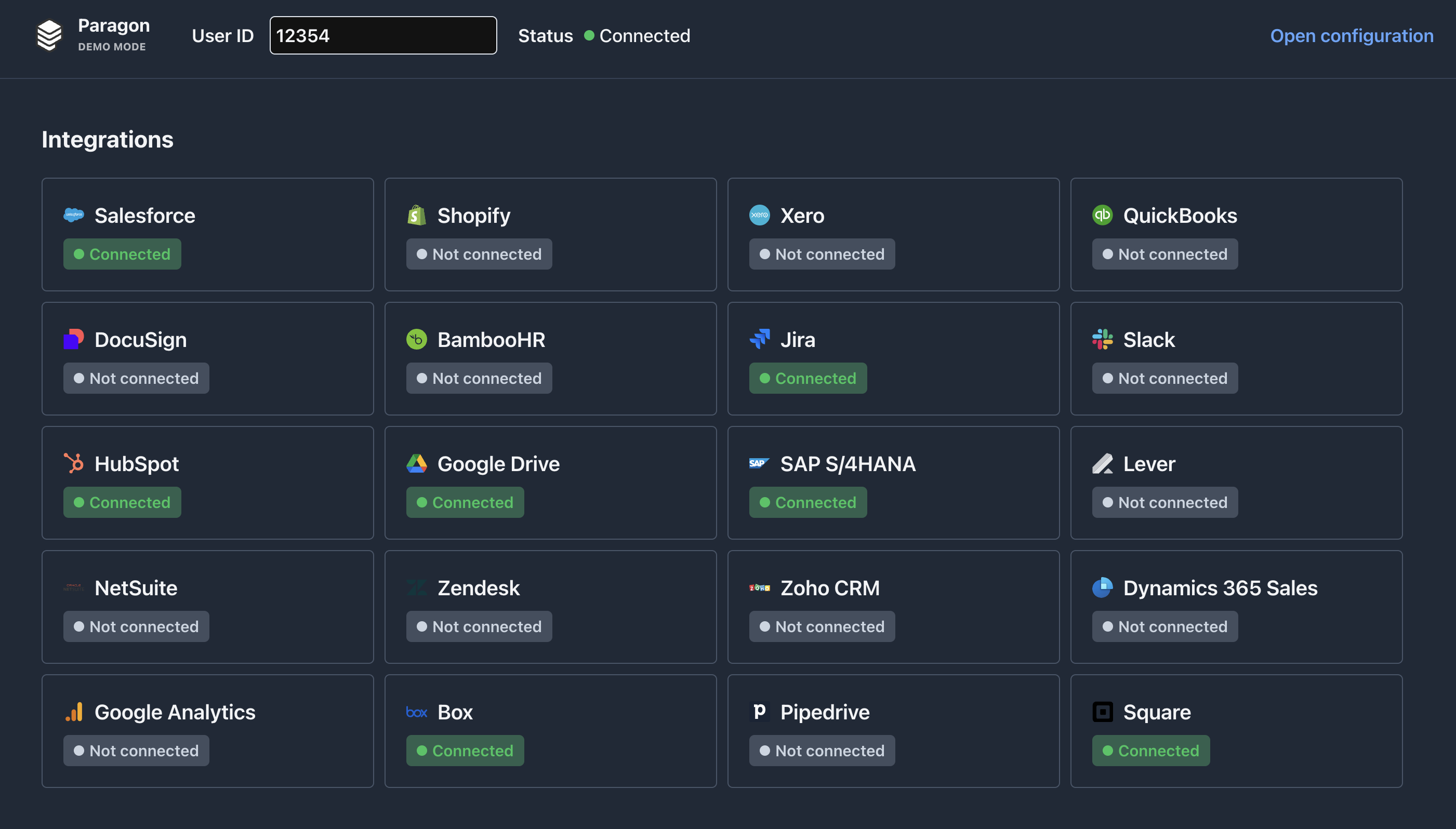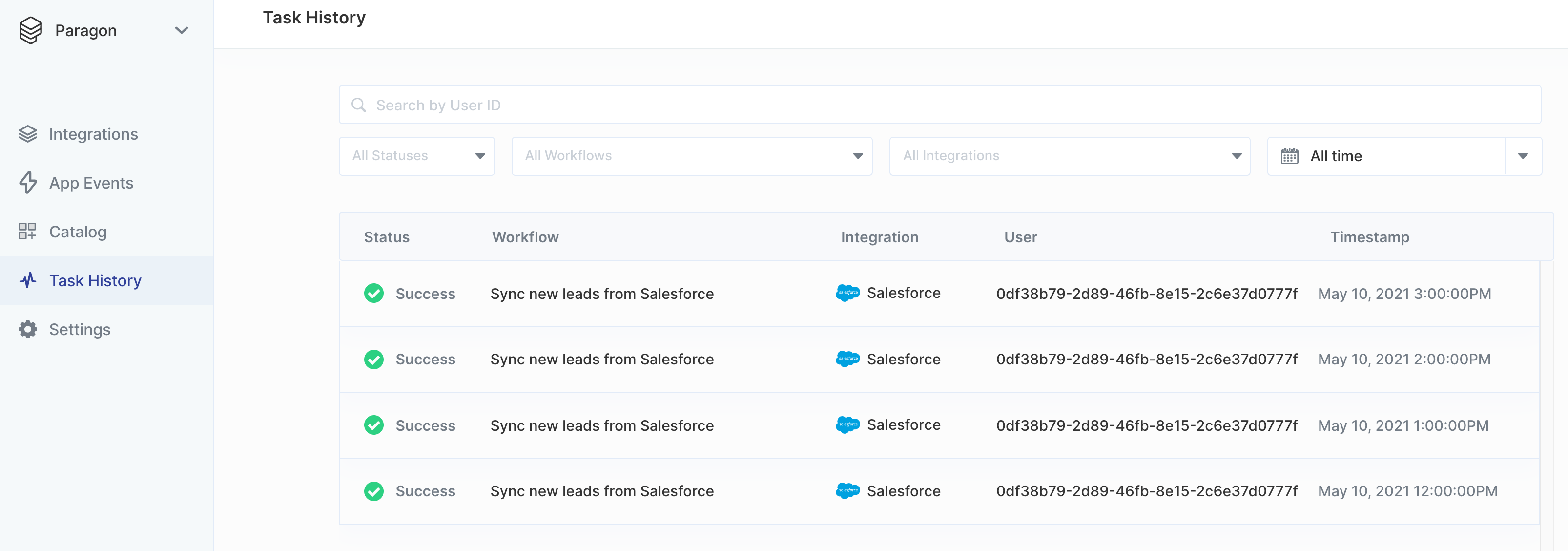Overview
Paragon’s Demo Environment is designed to serve as an example implementation of a website with the Paragon SDK embedded in it.
Paragon - Demo Mode
Testing an On-Premise Instance?
Testing an On-Premise Instance?
Use the Paragon Hosted Demo Environment to test integration logic for on-premise instances by adding the host query parameter with your instance URL:
https://demo.useparagon.com/demo?host=``{your_instance_url}Example:https://demo.useparagon.com/demo?host=https://integrations.tasklab.comGetting Started
To get started:- Click “Open Configuration”
- Input your Paragon Project ID. Your Project ID can be found in the URL of your Paragon Dashboard.
- Input a Signing Key. You can create a Signing Key if you don’t already have one by going to Settings > SDK Setup and select “Generate a New Signing Key”.
- Input a User ID. This is an example id based on a user / company in your application.
Active” in your Paragon Dashboard.
You can quickly send data to Paragon through your browser’s console to test the functionality of sending it from your application. Using Task History, you can verify that your workflows were successfully triggered.
Testing Workflows
Once you’ve connected to an integration, you can test any of the workflows for the integration.Via SDK
- In your browser, right-click anywhere on the page and select “Inspect” to open the Developer Console.
- Within the Developer Console, click on the Console tab to access the JavaScript console.
- Copy the SDK call that triggers the desired workflow and paste it into the Console. View triggers.
-
Press
Enterto send the SDK call and trigger the workflow.
Via REST API
- Navigate to a website or application you can use to test API requests, like Postman.
- Copy the REST API call that triggers the desired workflow and paste it into the URL input. View triggers.
- Use Paragon’s JWT Generator to generate a JWT for the example user / company ID you provided earlier.
- Under Authentication, select Bearer Token and paste the created JWT.
-
Press
Sendto send the REST API call and trigger the workflow.
Validating Executions
After triggering a workflow, you can view your workflow execution in Task History.